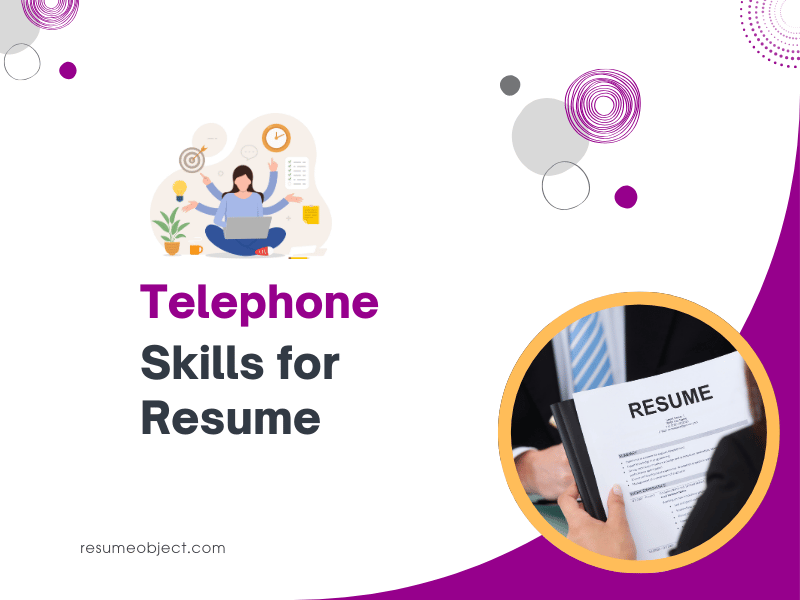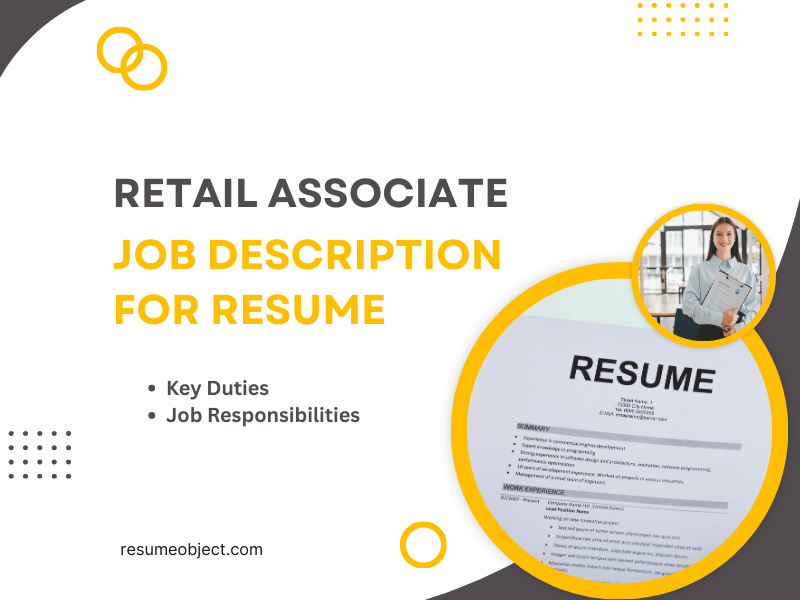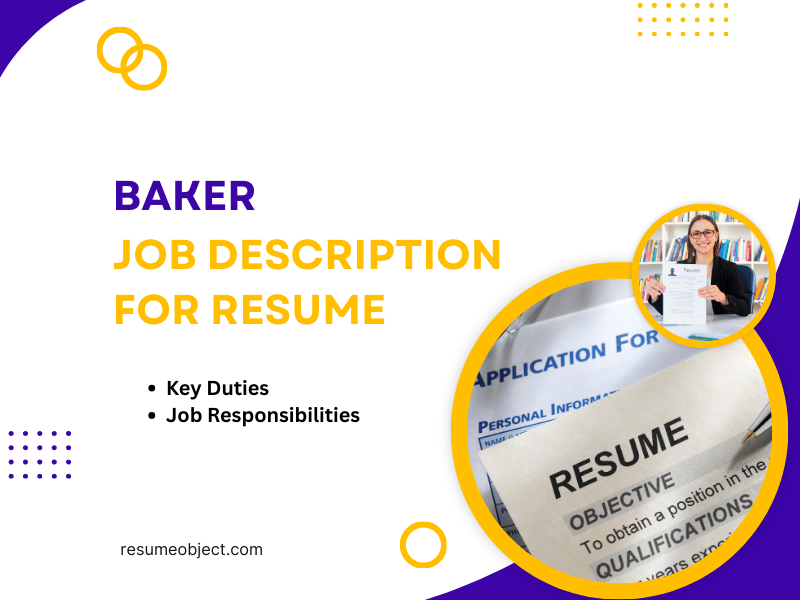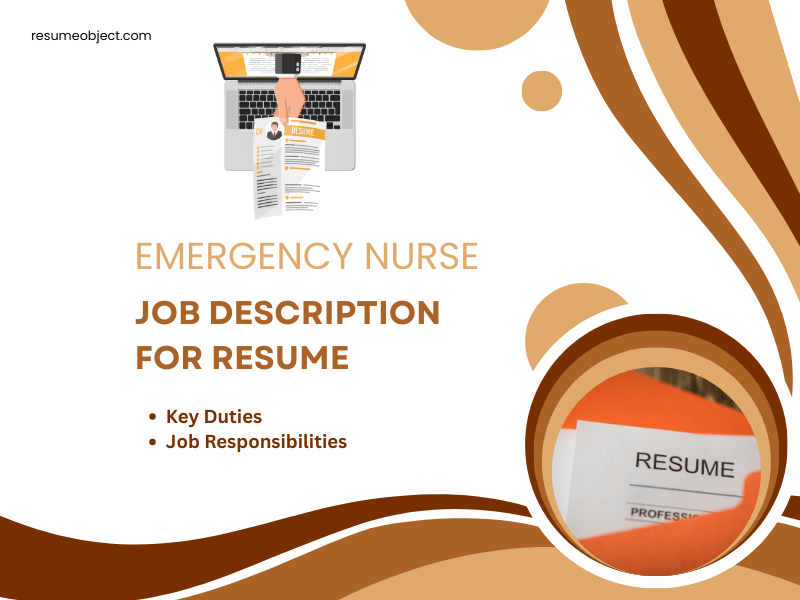The work experience section is the heart of your resume, offering a snapshot of your professional journey and demonstrating your value to potential employers. For many job seekers, however, listing work experience can feel challenging. How do you highlight achievements without sounding boastful or repetitive? At ResumeObject, we’re dedicated to empowering you with free resume templates, samples, and guides to craft a standout application.
This comprehensive guide walks you through how to list work experience effectively, focusing on showcasing your career achievements to impress hiring managers and pass applicant tracking systems (ATS).
Why the Work Experience Section Matters
The work experience section is often the first place hiring managers look to assess your qualifications. It provides a clear timeline of your professional roles, responsibilities, and accomplishments, proving you have the skills and experience needed for the job.
A well-crafted work experience section does more than list job duties. It tells a story of your impact, showing how you’ve contributed to organizational success. According to a 2024 survey by CareerBuilder, 73% of recruiters prioritize candidates who quantify their achievements, as measurable results provide concrete evidence of capability.
For job seekers, this section is critical because it:
- Demonstrates Relevance: Aligns your past roles with the job you’re applying for.
- Highlights Impact: Showcases achievements that set you apart from other candidates.
- Passes ATS: Uses job-specific keywords to ensure your resume reaches human reviewers.
- Builds Credibility: Provides a professional narrative of your career progression.
Whether you’re an entry-level candidate with internships or a seasoned professional with decades of experience, a strategic approach to listing work experience can elevate your resume.
Also Read: How to Craft an Effective Objective Statement for Entry-Level Resumes
How to List Work Experience Effectively
Crafting a compelling work experience section requires structure, clarity, and a focus on achievements. Follow these seven steps to ensure your work experience shines.
1. Choose the Right Format
Select a resume format that highlights your experience effectively. The reverse-chronological format (most recent job first) is standard for candidates with consistent work history. For those with gaps or career changes, a functional or combination format may emphasize skills over chronology.
Action: List your most recent role first, including job title, company name, location, and dates (e.g., “Software Developer, TechCorp, San Francisco, CA, Jan 2020–Present”). Use a clean, ATS-friendly layout with standard fonts like Arial.
2. Tailor to the Job Description
Analyze the job posting to identify key skills, responsibilities, and keywords, such as “project management” or “data analysis.” Tailor each job entry to reflect these priorities, ensuring your experience aligns with the employer’s needs and passes ATS filters.
Example: For a marketing role requiring “SEO expertise,” emphasize tasks like “optimized website content for SEO, increasing organic traffic by 15%.”
Action: Highlight 3-5 keywords per job entry and incorporate them naturally into your descriptions.
3. Focus on Achievements, Not Duties
Instead of listing routine tasks (e.g., “managed projects”), emphasize measurable achievements that demonstrate impact. Use the STAR method (Situation, Task, Action, Result) to frame accomplishments, quantifying results wherever possible.
Example: Instead of “responsible for sales,” write “increased annual sales by 25% through targeted client outreach strategies.”
Action: For each role, identify 2-3 achievements with metrics (e.g., percentages, dollar amounts, time saved) to showcase your contributions.
4. Use Action Verbs
Start each bullet point with a strong action verb like “led,” “developed,” “optimized,” or “implemented” to convey proactivity and competence. Avoid repetitive or weak verbs like “helped” or “worked on.”
Example: “Developed a customer feedback system, reducing response time by 20%” is stronger than “worked on customer feedback.”
Action: Compile a list of action verbs (e.g., achieved, streamlined, designed) and vary them across entries to maintain dynamism.
5. Keep It Concise and Relevant
Limit each job entry to 3-6 bullet points, focusing on the most impactful achievements. For older roles (10+ years ago), include minimal details unless highly relevant. Aim for clarity to keep hiring managers engaged.
Example: A recent role might have 5 bullet points, while a job from 15 years ago might have 1-2.
Action: Edit each entry to fit within 100-150 words total, prioritizing recent and relevant experience.
6. Include Relevant Non-Traditional Experience
For entry-level candidates or career changers, include internships, volunteer work, or freelance projects if they demonstrate transferable skills. Present these as professional experience, focusing on achievements.
Example: “Freelance Graphic Designer, Self-Employed, 2023–Present: Designed 10+ client logos, earning a 95% satisfaction rate.”
Action: Add 1-2 non-traditional roles if they align with the job’s requirements, formatting them like standard jobs.
7. Proofread for Accuracy
Errors in dates, job titles, or metrics can undermine credibility. Double-check company names, employment dates, and numerical data. Use tools like Grammarly to ensure polished, error-free writing.
Action: Review your work experience section twice, ideally with a fresh perspective, and ask a peer to proofread.
Addressing Employment Gaps and Job Hopping
Employment gaps and frequent job changes are not uncommon, but how you present them can make a significant difference in how employers perceive your resume. Here’s how to address these concerns effectively:
1. Be Honest but Strategic
- Never lie or hide dates. Recruiters often verify employment history.
- Be transparent, but avoid overexplaining within your resume. Save longer explanations for your cover letter or interview.
2. Use a Functional or Hybrid Resume Format
- These formats emphasize skills and achievements over a strict chronological timeline.
- Great for drawing attention away from date gaps and toward your value.
3. Group Freelance or Contract Work
- Bundle short-term projects under one heading like “Freelance Designer” or “Independent Consultant.”
- This helps present continuity and professional growth rather than sporadic employment.
4. Add Context Where Needed
- If you took time off for caregiving, education, or personal development, briefly mention it.
- Example: “Sabbatical for professional certification and family care (2022)”
5. Highlight Productive Gaps
- Show how you remained active during employment breaks.
- Include relevant volunteer work, courses, certifications, or freelance gigs.
6. Focus on Achievements in Each Role
- For job hoppers, emphasize what you accomplished in each position, no matter how short your tenure.
- Use quantifiable metrics to demonstrate your contribution.
7. Avoid Negative Language
- Don’t use phrases like “fired,” “laid off,” or “couldn’t find work.”
- Frame the experience positively, focusing on what you gained or learned.
8. Address It in Your Cover Letter
- If the gap or job changes are significant, provide context in your cover letter.
- Keep the explanation brief, optimistic, and future-focused.
Pro Tip: Gaps are not deal-breakers when you demonstrate professionalism, growth, and consistent effort toward your career goals. Recruiters value authenticity and resilience over perfection.
How to Include Internships and Volunteer Work
Internships and volunteer work can be strong assets on your resume, particularly if you’re early in your career or transitioning into a new field. These experiences help demonstrate your initiative, adaptability, and commitment to professional development.
When listing internships or volunteer positions, follow the same format you use for paid employment, including:
- Organization Name
- Your Role or Title
- Dates of Involvement
- Key Responsibilities and Achievements
Be selective and prioritize relevance. Include roles that:
- Align with the job you’re applying for
- Demonstrate transferable skills (e.g., communication, teamwork, problem-solving)
- Reflect commitment or leadership over time
Use action verbs and quantify results whenever possible. For example:
- Led a team of 5 volunteers during a community clean-up project
- Increased donor engagement by 20% through a targeted email campaign
Highlight long-term or leadership roles in your volunteer work. Recruiters value consistency and responsibility, even in unpaid roles.
Treat internships with the same weight as jobs if they involved real-world skills, especially in these cases:
- You contributed to a company’s measurable growth
- You worked with professionals or clients in a structured environment
- You developed specific technical or soft skills relevant to your career path
If you have employment gaps, volunteer and internship roles can help fill them. Position them in chronological order with your other work experiences to show continued professional activity.
Including internships and volunteer work effectively can strengthen your overall resume, giving hiring managers insight into your dedication, work ethic, and potential. Even outside traditional employment.
Examples of Work Experience Entries
Below are four examples of work experience entries tailored to different job categories, illustrating how to apply the steps above. Each entry emphasizes achievements and aligns with industry expectations.
Software Developer (Information Technology)
Software Developer, TechCorp, San Francisco, CA, Jan 2020–Present
- Developed scalable web applications using Python and JavaScript, improving system efficiency by 30%.
- Led a team of 5 developers to deliver a client project 2 weeks ahead of schedule, earning a 98% client satisfaction score.
- Optimized database queries, reducing load times by 25% for a high-traffic platform.
- Implemented Agile methodologies, increasing team productivity by 15%.
- Mentored 3 junior developers, enhancing team coding standards.
Registered Nurse (Healthcare)
Registered Nurse, City Hospital, Boston, MA, Jun 2018–Present
- Provided patient-centered care in a 50-bed ICU, reducing recovery times by 15% through evidence-based protocols.
- Trained 10 new nurses on EMR systems, improving documentation accuracy by 20%.
- Collaborated with multidisciplinary teams to develop care plans, enhancing patient satisfaction scores by 10%.
- Streamlined medication administration processes, saving 5 hours weekly.
- Earned ACLS certification, strengthening emergency response capabilities.
Marketing Manager (Marketing & Advertising)
Marketing Manager, BrandWorks, Chicago, IL, Mar 2019–Present
- Launched SEO-driven campaigns, increasing website traffic by 25% and generating $500K in revenue.
- Managed a $200K budget, optimizing ad spend to improve ROI by 30%.
- Developed social media strategies, growing follower base by 40% in 12 months.
- Led a team of 4 to create 10+ content pieces monthly, boosting engagement by 15%.
- Analyzed market trends using Google Analytics, informing 3 successful product launches.
Elementary Teacher (Education)
Elementary Teacher, Sunnyvale School, Austin, TX, Aug 2020–Present
- Designed interactive lesson plans for 25 students, improving test scores by 18%.
- Implemented classroom management strategies, reducing disruptions by 30%.
- Coordinated 5 STEM workshops, increasing student participation by 50%.
- Mentored 2 student teachers, enhancing their instructional skills.
- Integrated technology tools, boosting student engagement by 20%.
Common Mistakes to Avoid
When listing work experience, steer clear of these pitfalls to maintain professionalism and impact.
- Listing Only Duties: Focusing on tasks (e.g., “answered phones”) without achievements weakens your resume. Highlight results like “improved customer satisfaction by 10%.”
- Using Vague Metrics: Avoid unquantified claims like “improved sales.” Specify “increased sales by 20%” for credibility.
- Overloading with Irrelevant Roles: Including unrelated or outdated jobs dilutes focus. Omit or minimize roles over 10-15 years old unless critical.
- Inconsistent Formatting: Varying fonts, date formats, or bullet styles looks unprofessional. Use a uniform structure across entries.
- Including Personal Pronouns: Avoid “I managed” or “my responsibilities.” Use implied first-person, e.g., “Managed a team.”
- Neglecting ATS: Complex graphics or non-standard headings can confuse ATS. Stick to simple, text-based formats.
Tips for Different Career Stages
Tailor your work experience section based on your career stage to maximize relevance.
- Entry-Level Candidates: Focus on internships, volunteer work, or coursework projects. Example: “Marketing Intern: Created 5 social media campaigns, increasing engagement by 10%.”
- Mid-Career Professionals: Emphasize leadership and impact. Example: “Led a team of 8, reducing project costs by 15%.”
- Career Changers: Highlight transferable skills. Example: “Retail Manager: Developed customer service skills, resolving 95% of complaints.”
- Senior Professionals: Focus on strategic contributions. Example: “Directed $1M budget, improving ROI by 25%.”
Customizing for Different Industries
Different industries value specific achievements. Here’s how to tailor your work experience for key job categories:
- Information Technology: Highlight technical projects and tools, e.g., “Built REST APIs, reducing latency by 20%.”
- Healthcare: Emphasize patient outcomes and certifications, e.g., “Improved patient satisfaction by 15%.”
- Marketing & Advertising: Focus on campaign results and analytics, e.g., “Increased conversions by 30% via targeted ads.”
- Education: Stress student outcomes and teaching methods, e.g., “Raised test scores by 20% through innovative lessons.”
- Finance & Accounting: Quantify financial impact, e.g., “Reduced audit discrepancies by 25%.”
- Business & Management: Showcase leadership and strategy, e.g., “Streamlined operations, saving $100K annually.”
Handling Employment Gaps
Employment gaps can be addressed strategically:
- Be Honest: Use accurate dates to maintain credibility.
- Explain Briefly: If relevant, note reasons like “Career Break: Pursued Professional Development, 2022.”
- Fill with Experience: Include volunteer work or freelance projects, e.g., “Freelance Consultant, 2022: Advised 3 clients on strategy.”
- Use a Functional Format: Emphasize skills over chronology if gaps are significant.
Non-Traditional Experience for Entry-Level Candidates
If you lack formal work experience, include:
- Internships: “Marketing Intern: Analyzed campaign data, improving click-through rates by 10%.”
- Volunteer Work: “Volunteer Coordinator: Organized 5 events, raising $5K for charity.”
- Freelance Projects: “Freelance Writer: Produced 20+ articles for local businesses.”
- Coursework Projects: “Capstone Project: Developed a mobile app prototype, presented to 50+ stakeholders.”
Tools to Enhance Your Work Experience Section
Use these tools to refine your work experience:
- Job Description Analyzers: Jobscan identifies keywords to match job postings.
- Grammar Checkers: Grammarly ensures error-free writing.
- Resume Builders: Canva or ResumeObject’s templates help visualize your experience.
- LinkedIn Profiles: Review your profile for achievements to include.
Testing and Refining Your Work Experience
After drafting your work experience section:
- Get Feedback: Ask a mentor or peer to review for clarity and impact.
- Compare with Job Description: Ensure keywords and skills align.
- Test ATS Compatibility: Paste into a plain text editor to check readability.
- Revise for Each Job: Tailor entries to highlight relevant achievements.
Work Experience vs. Other Resume Sections
The work experience section complements other resume parts:
- Summary: The summary introduces your achievements broadly, while work experience provides specifics.
- Skills: Skills are listed separately but reinforced in work experience with examples.
- Education: Work experience takes precedence for experienced candidates, but education may lead for entry-level.
Examples Across More Job Categories
Additional examples for variety:
Business Analyst (Business & Management)
Business Analyst, DataCorp, New York, NY, Feb 2021–Present
- Analyzed data trends, improving forecasting accuracy by 20%.
- Developed dashboards using Tableau, saving 10 hours weekly.
- Collaborated with 5 teams to streamline processes, reducing costs by 15%.
Graphic Designer (Arts, Entertainment & Media)
Graphic Designer, CreativeStudio, Los Angeles, CA, Apr 2020–Present
- Designed 50+ client branding packages, achieving 95% satisfaction.
- Created 10 social media campaigns, increasing engagement by 30%.
- Trained 3 interns on Adobe tools, enhancing team output.
Retail Associate (Retail & Sales)
Retail Associate, ShopEasy, Miami, FL, Nov 2019–Present
- Boosted sales by 15% through upselling techniques.
- Managed inventory, reducing stock discrepancies by 20%.
- Trained 5 new hires, improving team efficiency.
Conclusion
The work experience section is your chance to shine, showcasing your career achievements to impress employers. By choosing the right format, tailoring to the job, focusing on measurable results, and using a professional tone, you can create a compelling narrative of your professional impact. Avoid common mistakes like vague metrics or irrelevant roles, and customize your entries for your career stage and industry. At ResumeObject, we’re here to support your job search with free resources. Start building your standout resume today with our templates and samples!




